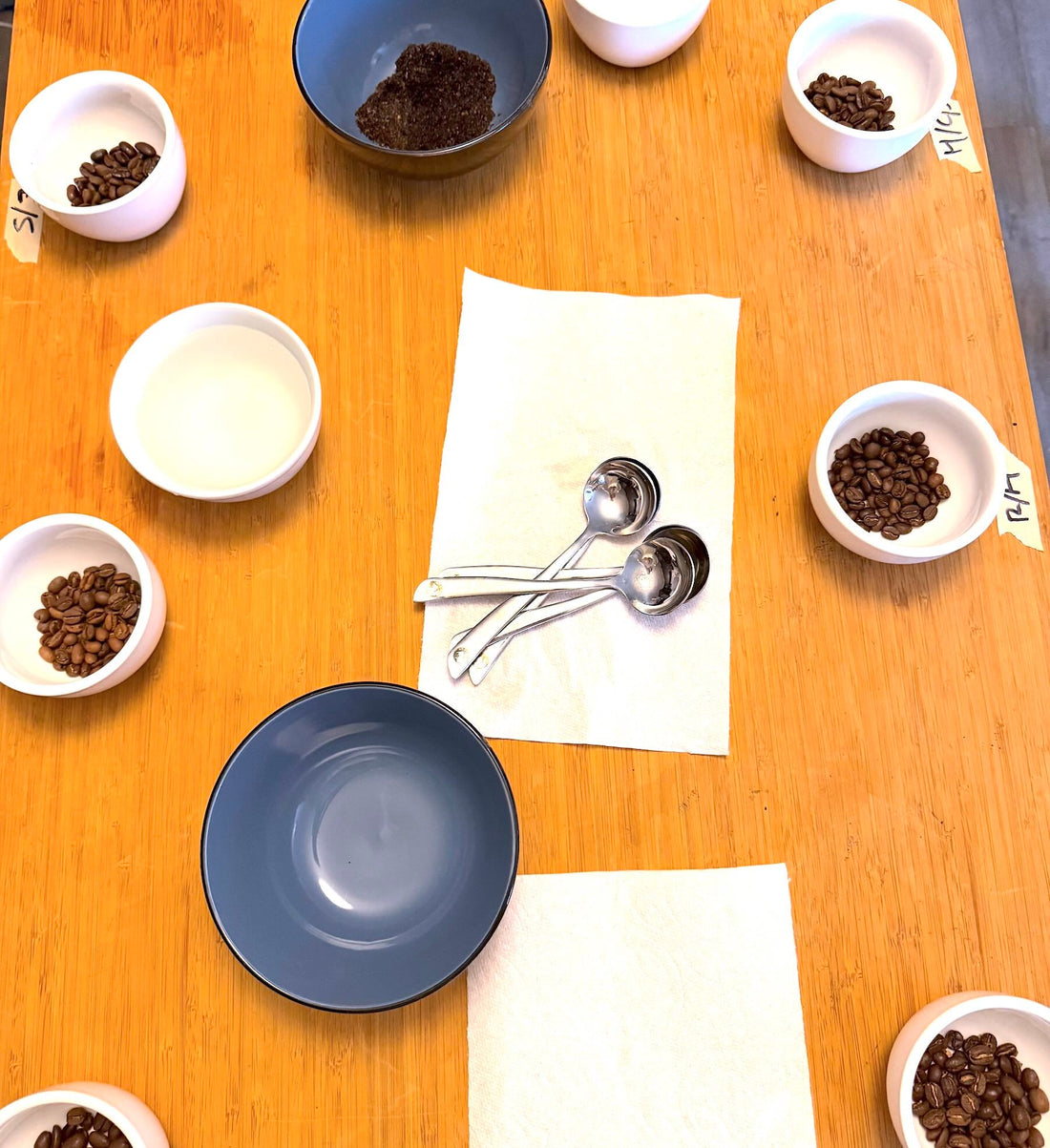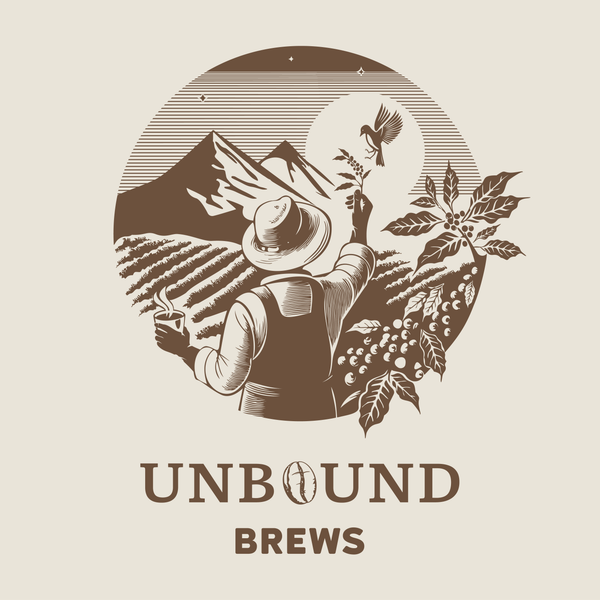
Understanding Flavor Notes in Coffee
If you’ve picked up a bag of our coffee, you might have noticed tasting notes listed on the label—like “hazelnut,” “brown sugar,” or “dark chocolate.” Rest assured, our coffee always consists of 100% specialty coffee beans, never any additives or artificial flavors. These notes are different for every coffee we roast, and they’re one small window into the rich, complex world inside your cup.
Tasting coffee is about exploration, not perfection. Everyone has a different palate, and what you taste might not match exactly what’s written—and that’s where the magic lies. Coffee invites us to try new things, to stay curious, and to learn a little more with every sip. Coffees taste different because of growing conditions, varietals, processing, roasting, and many other factors.
Who Decides Flavor Notes of Coffee?
When a coffee is produced, it often makes its way to importers or buyers who have dedicated cupping teams that carefully taste and analyze it. This team often includes a Q Grader, a certified coffee taster trained to detect subtle flavor differences with remarkable precision. Think of a Q Grader like a sommelier for coffee—their certification ensures a standard of quality and expertise that’s trusted worldwide.
Cupping is a standardized process designed to evaluate a coffee’s attributes objectively (fragrance, flavor, body, acidity, and more), allowing teams to pick out the notes they find most prominent.
What is the SCA Flavor Wheel?
The SCA Flavor Wheel, created by the Specialty Coffee Association, is a tool that helps guide tasters in identifying flavors in coffee. It starts broad in the center—categories like “fruity” or “spicy”—and narrows outward to more specific flavors like “blueberry” or “cinnamon.”
If you taste something generally fruity, for example, you can trace that part of the wheel and ask: does this lean more towards citrus, stone fruit, or berry? You then keep narrowing it down, slowly. Maybe you find something reminiscent of ripe strawberries—or even strawberry jam. You can do the same for sweetness, acidity, and spice.
Where Do Coffee Flavors Come From?
The flavors you taste in your cup were already inside the green coffee—locked away until heat, time, and care brought them out during roasting. As coffee roasts, chemical changes occur: sugars caramelize, aromatic oils develop, acids shift. These natural reactions unlock flavors that were shaped long ago by the coffee’s origin, the soil, the weather, and the way it was processed.
For instance, a naturally processed Ethiopian coffee might burst with fruity notes, while a washed Colombian coffee often leans toward chocolate and nut flavors. Every coffee carries the story of its land and journey, so each one tastes a little different.
Do We Add Flavors To Our Coffee?
When you see “cherry” or “hazelnut” on an Unbound Brews label, don’t worry—we haven’t added sweeteners or anything artificial. Those tasting notes are natural flavors from coffee beans themselves. It’s simply a suggestion of what you might notice when you taste it.
How to Discover Your Own Coffee Tasting Notes
Start by smelling the fragrance of freshly ground coffee, then the aroma once it’s brewed. Take a sip, and another as it cools—you’ll often notice new layers unfolding. Pay attention to the first flavor you taste, how it lingers, and how it feels on your palate.
Think about the coffee’s sweetness, acidity, bitterness, and body. Is it heavy or light? Does it remind you of fruit, nuts, spices, or something else entirely? Use the Flavor Wheel as a guide, but trust your own experience too. There’s no wrong answer—only a conversation between you and your coffee.
How To Bring Out the Best Coffee Flavor
At Unbound Brews, we roast every batch with care and intention to highlight the best flavors already inside the coffee. Small-batch roasting allows us to check quality constantly, adjusting as needed to do right by the coffee’s natural gifts.
But flavor doesn’t stop at roasting—it’s shaped by how you brew it too. The right grind size, filtered water, proper ratios, and clean equipment all help. And don’t forget to store your coffee properly to protect those delicate flavors.
Above all, coffee is about enjoyment. Explore, tweak, experiment—and savor the journey!

